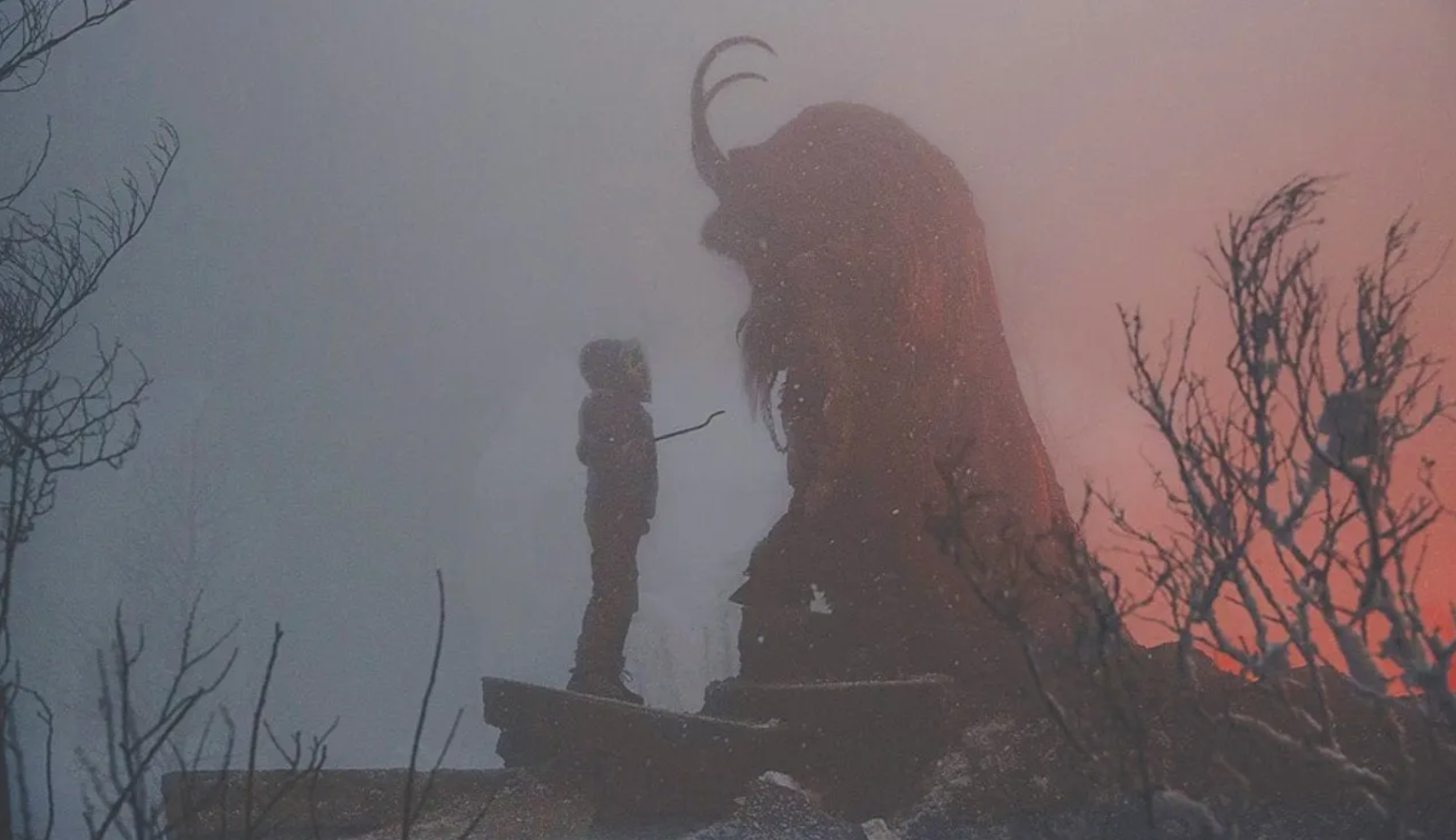Is there such a thing as a bad kid? Does minor disobedience warrant a greater punishment? Are there really any heavy consequences to the mistakes we all make when we’re young? In the eyes of the Krampus, the answer is wholeheartedly yes. Acting as the shadow of Saint Nicholas, the Krampus is one of many in a cast of Yuletide characters from all over Europe and stands as grimly over the snow as any other strange winter creature would.
The Krampus is the reason that little children in the Alps used to try their hardest to be good, especially around the holiday season. While Saint Nicholas rewarded all the good children, the Krampus walked the night before him to clean up those who hadn’t been as nice, beating them with a birchbark switch. For the particularly bad ones, it was said that he shoved them in the sack or basket that he carried on his back, which he would use to take them away to be consumed (or sent to Hell). Needless to say, if you were a little kid from Germany or Austria in the 12th century, he was a pretty convincing threat to get you to do as you were told. Under no circumstances did you want to meet the man-goat hybrid who would stalk the streets and dole out punishment the night before Saint Nicholas’ Day. This night was known as Krampusnacht, which literally translates to “Krampus Night.”
Though perhaps “beloved” isn’t the right word, this Pagan-born being is a significant part of the holiday culture of the Alps. With a wide range spilling as far South as Italy and Croatia and all the way up to the Czech Republic and Slovakia, he has long been an extremely well-known folkloric figure. He has his own holiday, after all, and is even important enough for adults to dress up as him during the Krampuslauf (Krampus Run), get drunk, and chase spectators. Similarly, Krampusnacht often involves alcohol (especially schnapps), theatrical performances, traditional foods, music, bonfires, and more. In modern times, he has become a symbol of cultural resurgence and the rekindling of old traditions.
Tragically, the tradition is heavily contended by some critics in the modern world. Is it still appropriate? Is it too traumatizing? Do some of the outdated portions need to be rewritten? Can they be rewritten? The thing about Krampus is that he is a symbol of the darkness winter carries, and it’s hard to assimilate that into the modern-day image of what Christmas is. What do you do when something of such importance in cultural heritage is challenged by the evolving world?
Regardless of your opinions on Krampus, he has taken the world by storm in his revival. Now a symbol of rebellion against holiday commercialism, the Yuletide harbinger of punishment has become adopted by people and cultures around the world. He is an old, old tradition that has survived Christianity, fascism, and countless changing winters. To the joy of Krampus lovers everywhere, it’s safe to say that he and the traditions surrounding him won’t be going anywhere anytime soon. Be good this holiday season, and remember to stay safe out there.
Sources:
header image taken from the 2015 comedy horror film Krampus directed by Micheal Dougherty
https://www.britannica.com/topic/Krampus
https://www.history.com/news/krampus-christmas-legend-origin
https://en.wikipedia.org/wiki/Krampus
https://thefairytaletraveler.com/2017/12/21/legend-of-krampus/
https://www.rent-a-christmas.com/blog/article/krampusnacht-celebrating-santas-dark-counterpart

 Meta’s AR Glasses: A Vision of the Future?
Meta’s AR Glasses: A Vision of the Future?